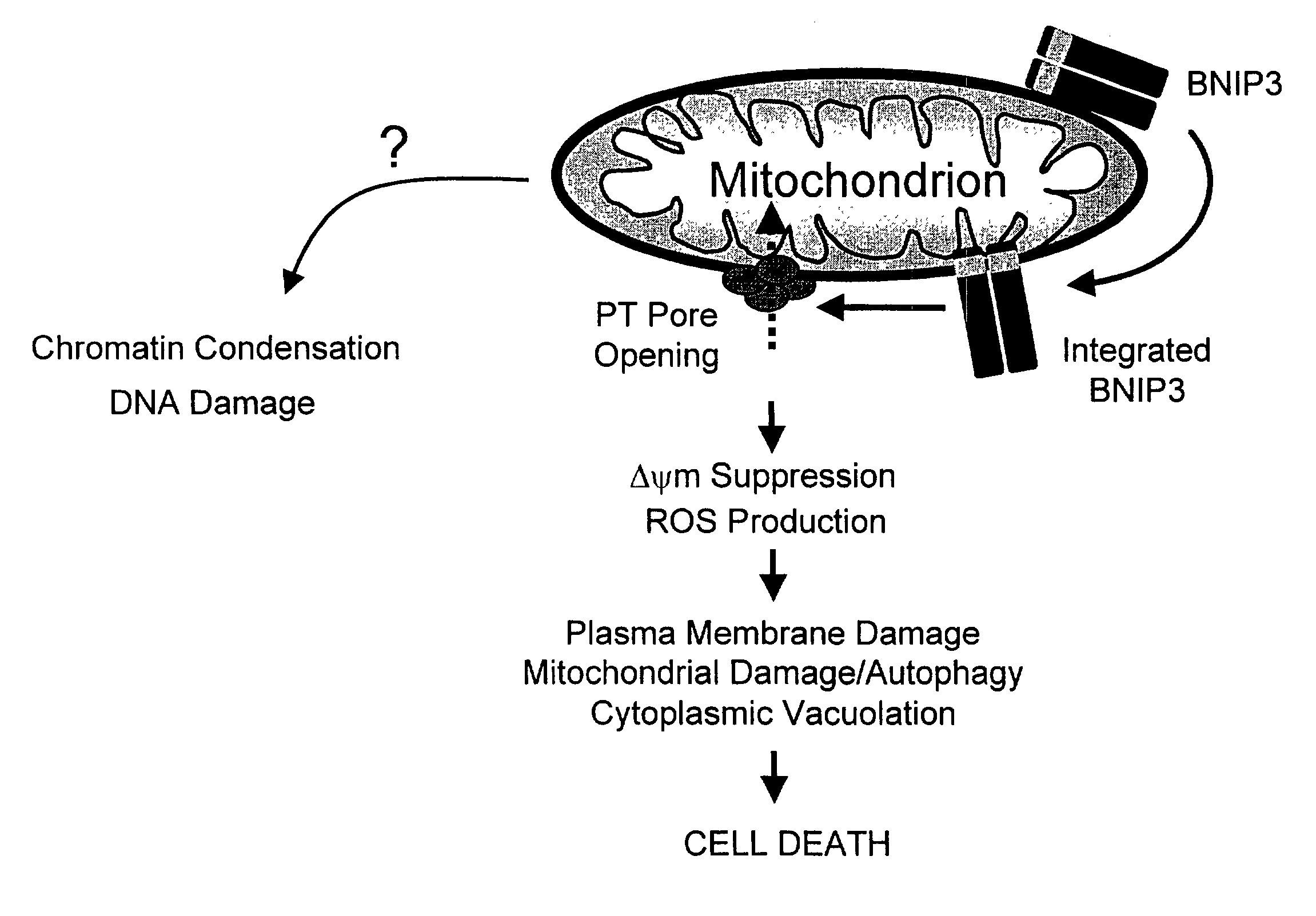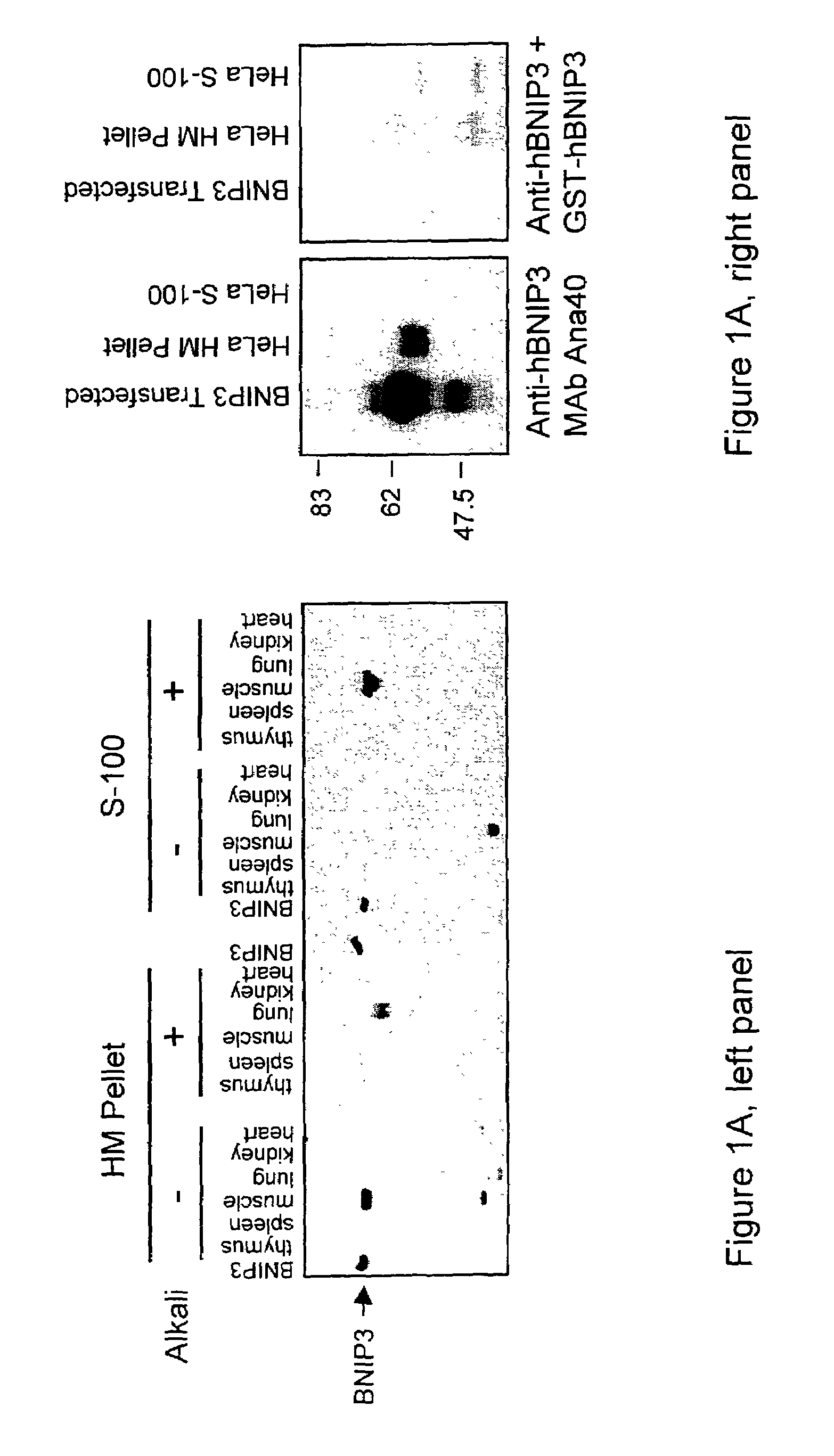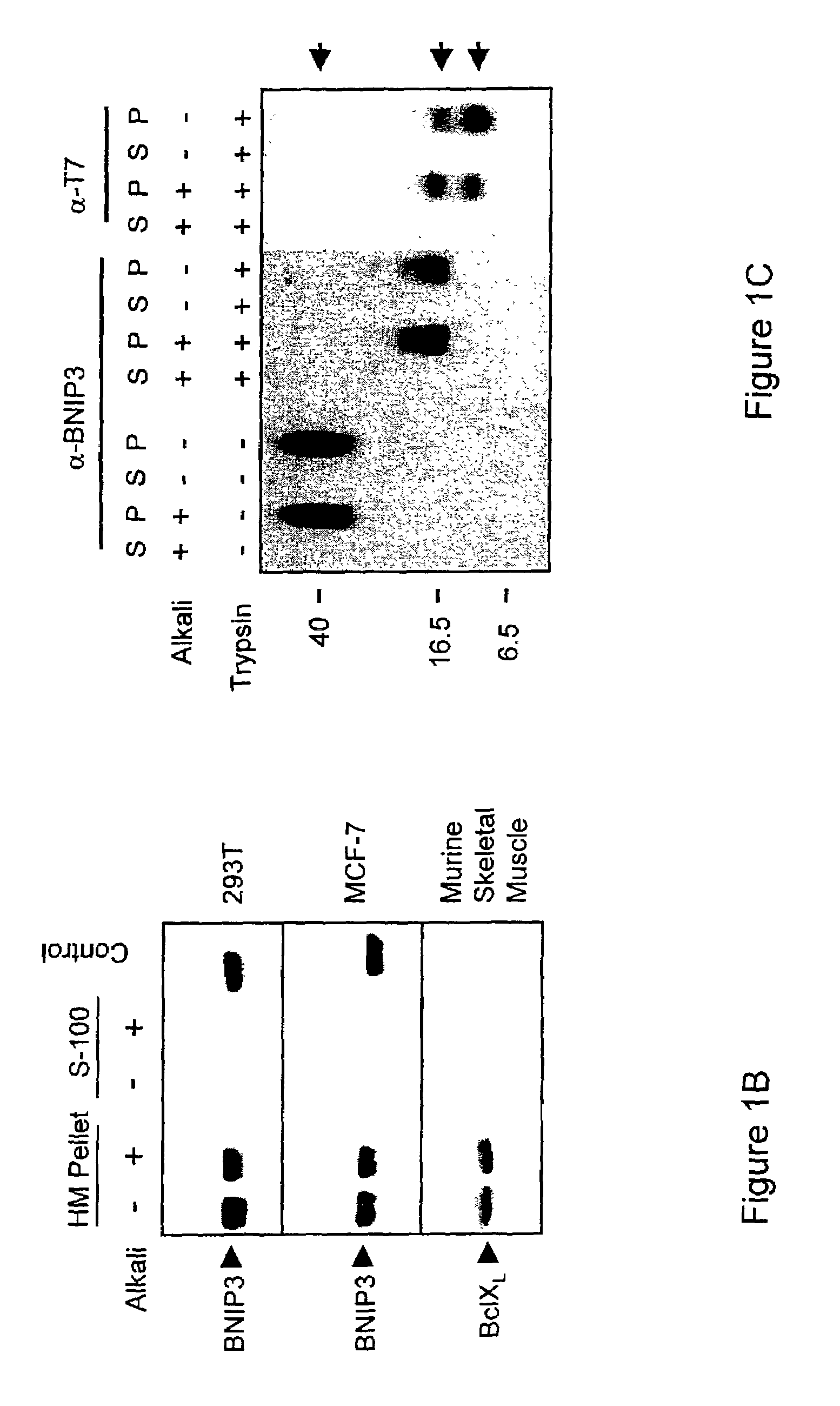NIP3 family of proteins
a technology of nip3 and proteins, applied in the field of nip3 family of proteins, can solve the problems of large-amplitude mitochondrial swelling, undefined precise mechanism (s) by which bci-2 is able to inhibit apoptosis, and insufficiently defined. to achieve the effect of enhancing or excluding bnip3 expression
- Summary
- Abstract
- Description
- Claims
- Application Information
AI Technical Summary
Benefits of technology
Problems solved by technology
Method used
Image
Examples
example 1
Materials and Methods
Cell Lines
[0155]MCF-7 and HeLa cells were cultured in a minimal essential medium (MEM) (Gibco-BRL) supplemented with 10% fetal bovine serum (FBS) (Cansera), 1% MEM sodium pyruvate (Gibco-BRL), 1% HEPES (Gibco-BRL), and 1% L-glutamine (Gibco-BRL). Mouse embryonic fibroblasts (MEFs) deficient in Apaf-1, caspase 9, or caspase 3 were cultured as previously described (Hakem, R. et al, 1998). 293T and 293-Bcl-2 cells were cultured in Dulbecco's modified Eagle's medium (DMEM) (Gibco-BRL) supplemented with 10% FBS.
Expression Plasmids
[0156]T7-tagged pcDNA3-BNIP3, T7-tagged pcDNA3-BNIP3ΔTM (Chen, G. et al, 1997), and HA-tagged pcDNA3-BNIP3 (Chen, G. et al, 1999) have been described previously. pcDNA3-caspase-9-His6 and pcDNA1-p35 were gifts from Emad Alnemri (Thomas Jefferson University, Philadelphia, Pa.). pcDNA3-Apaf-1 and pFLAG-CMV-5a-tBID were provided by Xiaodong Wang (Howard Hughes Medical Institute, Dallas, Tex.) and Junying Yuan (Harvard Medical School, Boston, Ma...
example 2
[0202]Neuronal cell death has been shown to occur by apoptotic, necrotic and alternative cell death mechanisms. Recently, it was reported that the gene BNIP3, a member of the Bcl-2 family without a functional BH3 domain, induces cell death in a necrotic-like manner and that this gene-regulated cell death pathway involves opening of the mitochondrial permeability transition pore without caspase activation and cytochrome c release; BNIP3-mediated cell death was induced by hypoxic challenge in non-neuronal cells. BNIP3 is a gene that when activated in brain is capable of inducing necrotic (possibly paraptotic) cell death. In rat brain, BNIP3 staining was not detectable by immunohistochemistry. However, BNIP3 expression was increased dramatically in models of brain injury and excitotoxicity. After blunt trauma to brain or intra-striatal injection of kainic acid, BNIP3 immunopositive cells were observed adjacent to the sites of injury and the BNIP3 positive cells showed DNA fragmentation...
example 3
[0203]Neuronal cell death has been shown to occur by apoptotic, necrotic, and alternative cell death mechanisms. Recently, it was reported that BNIP3, a member of the Bcl-2 protein family without a functional BH3 domain, induces cell death in a necrotic-like manner and that this gene-regulated cell death pathway involves opening of the mitochondrial permeability transition pore without caspase activation and cytochrome c release. However, to date nothing is know about the role of BNIP3 in neuronal cell death. BNIP3, when expressed in neurons, is capable of inducing necrotic (possibly parapoptotic) cell death. Glutamate was applied to cultures of rat hippocampal neurons, expression of BNIP3 was detected using immunohistochemical techniques, and cell death was measured morphologically and by using trypan blue exclusion. BNIP3 expression following application of glutamate was both time- and glutamate concentration-dependent. Cell death was also found to be time-and concentration-depend...
PUM
| Property | Measurement | Unit |
|---|---|---|
| Cell death | aaaaa | aaaaa |
Abstract
Description
Claims
Application Information
 Login to View More
Login to View More - R&D
- Intellectual Property
- Life Sciences
- Materials
- Tech Scout
- Unparalleled Data Quality
- Higher Quality Content
- 60% Fewer Hallucinations
Browse by: Latest US Patents, China's latest patents, Technical Efficacy Thesaurus, Application Domain, Technology Topic, Popular Technical Reports.
© 2025 PatSnap. All rights reserved.Legal|Privacy policy|Modern Slavery Act Transparency Statement|Sitemap|About US| Contact US: help@patsnap.com



